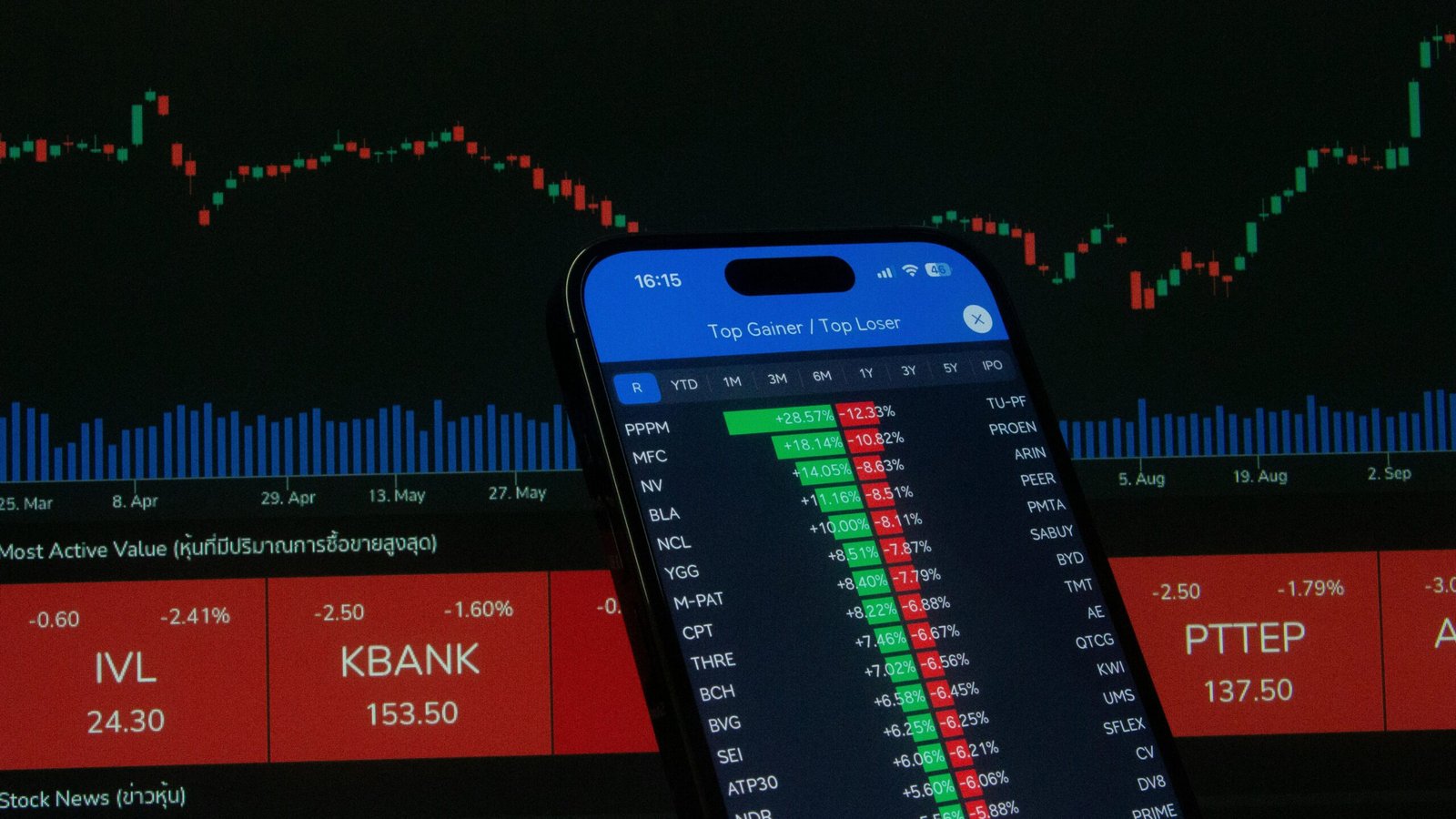Understanding Market Trends for 2025
As we look forward to 2025, understanding market trends will play a critical role in shaping investment strategies. Various key economic indicators are expected to influence market performance, including GDP growth rates, unemployment statistics, and inflation levels. Projections indicate a gradual recovery from the challenges posed by global disruptions, leading to anticipated steady growth across multiple sectors. Investors will benefit from staying informed about these factors, as they can provide insights into which industries may offer the maximum returns.
Technological advancements are predicted to be a major driving force behind the performance of several sectors. Industries such as artificial intelligence, renewable energy, and biotechnology are expected to thrive, providing lucrative investment opportunities. In particular, companies that innovate in sustainability practices or those that leverage technology for efficiency stand poised for success. Demographic shifts also merit attention; as millennials and Gen Z move into their prime earning years, their preferences for sustainable and tech-driven products could reshape consumer markets.
Additionally, geopolitical factors are likely to impact investment strategies significantly. Trade relationships, regulatory changes, and political stability in key regions can create both opportunities and challenges for investors. For instance, countries pursuing digital infrastructure may experience growth in tech investments, while those facing political uncertainty could deter foreign capital. As such, aligning investment strategies with an understanding of these trends is essential for investors looking to maximize their returns in 2025.
In conclusion, keeping abreast of market trends, technological advancements, demographic shifts, and geopolitical factors will ensure that investors make informed decisions. By incorporating these insights into their investment strategies, they can position themselves to capitalize on the potential opportunities that 2025 may present.
Top Sectors to Watch in 2025
As investors look towards 2025, certain sectors are emerging as pivotal areas for growth, promising to deliver significant returns. Among these, technology stands out as a dominant force. With continuous advancements in artificial intelligence, cloud computing, and cybersecurity, technology companies are well-poised to benefit from increased digital transformation across industries. Established giants like Microsoft and emerging firms specializing in niche technologies represent valuable opportunities for strategic investment.
Another critical sector is renewable energy, driven by escalating demands for sustainable solutions amid growing climate concerns. Data from the International Energy Agency suggests that investment in renewable technologies, such as solar and wind, will surge as governments implement more robust policies to combat climate change. Companies like NextEra Energy, known for extensive investments in clean energy projects, and innovative startups focusing on energy storage are key players in this realm.
The healthcare sector also presents compelling prospects for 2025. With an aging global population and increasing healthcare expenditures, companies involved in pharmaceuticals, biotechnology, and telehealth are likely to experience noteworthy growth. Biopharma firms that prioritize research and development, such as Moderna and Amgen, continue to show potential. Additionally, technological integration in healthcare, such as remote patient monitoring, opens avenues for further expansion and investment.
Financial services represent yet another sector to monitor closely. The rise of fintech companies is reshaping how consumers interact with financial institutions, promoting innovation and competition. Organizations like Square and PayPal are at the forefront, leveraging technology to enhance payment systems and financial accessibility. Traditional banks are also adapting by investing in digital capabilities to compete effectively.
In conclusion, sectors such as technology, renewable energy, healthcare, and financial services are likely to be instrumental in shaping investment strategies for 2025. Identifying both established players and emerging competitors within these sectors will be crucial for maximizing returns.
Key Stocks to Consider for Maximum Returns
As we look toward 2025, investors should pay close attention to several stocks that demonstrate strong potential for maximum returns. One of the candidates is Apple Inc. (AAPL), a stalwart in the technology sector. Apple has maintained a significant market position, consistently reporting robust financial performance with a compound annual growth rate (CAGR) in revenue exceeding 10% over the past decade. Anticipated product launches and growth in its services segment indicate a promising trajectory, though investors should remain aware of the competitive landscape and regulatory scrutiny faced by tech companies.
Another noteworthy stock is Microsoft Corporation (MSFT). With its focus on cloud computing and a diverse suite of enterprise solutions, Microsoft is positioned for sustained growth. The company’s Azure platform has been experiencing double-digit growth, and projections suggest that this trend will continue, bolstered by increasing demand for digital services. Despite a competitive market, Microsoft’s strong balance sheet, including low debt levels and substantial cash reserves, positions it favorably against potential downturns.
Switching to the healthcare sector, Pfizer Inc. (PFE) presents a compelling opportunity as well. Following its success with the COVID-19 vaccine, Pfizer’s pipeline of drugs and vaccines, coupled with strategic acquisitions, presents a wealth of growth opportunities. The stock’s dividend yield also offers a buffer against volatility, appealing to income-focused investors. However, it is essential to evaluate risks related to patent expirations and market competition in pharmaceuticals.
Investors may consider employing strategies such as dollar-cost averaging, which helps mitigate volatility risks by spreading investments over time. Alternatively, a value investing approach may be suitable if looking toward stocks currently undervalued relative to their fundamentals. Tailoring investment strategies based on individual risk tolerance and market conditions will be crucial as stocks are evaluated for potential inclusion in a diversified portfolio.
Creating a Diversified Investment Portfolio
Investing in the stock market presents opportunities for significant returns, especially when considering stocks projected for growth in 2025. However, the inherent volatility of financial markets necessitates a careful approach to mitigate risks. One of the most effective strategies is the creation of a diversified investment portfolio. Diversification involves spreading investments across various asset classes, sectors, and geographical locations to reduce exposure to any single investment risk.
A well-structured portfolio typically includes a blend of stocks, bonds, and perhaps alternative investments. By allocating your assets across different sectors—such as technology, healthcare, and consumer goods—you can better protect your investments against the impact of market downturns. For instance, if one sector underperforms, a strong performance in another can help buffer against losses, enhancing the potential for overall returns.
Effective diversification should consider both the types of investments and their correlations with one another. This means that while including top stocks for 2025, it is crucial to analyze how they react under various market conditions. Utilizing strategies such as sector rotation or rebalancing can help maintain the desired level of risk and return. Additionally, in periods of market turbulence, having a diversified portfolio can provide greater stability, as not all investments will respond to market changes in the same way.
Regularly reviewing your investment strategy is essential in today’s dynamic financial landscape. Staying informed about market trends and shifts allows investors to make necessary adjustments to their portfolios. Evaluating performance against financial goals can highlight areas for rebalance, ensuring that your diversification strategy remains aligned with your risk tolerance and investment objectives. Therefore, a diversified investment portfolio is a cornerstone for achieving sustainable growth and maximizing returns over the long term.







